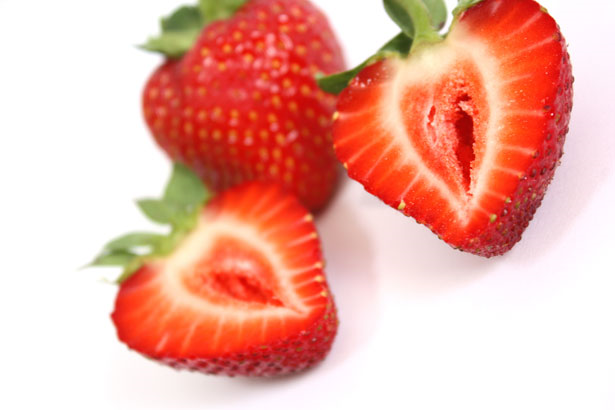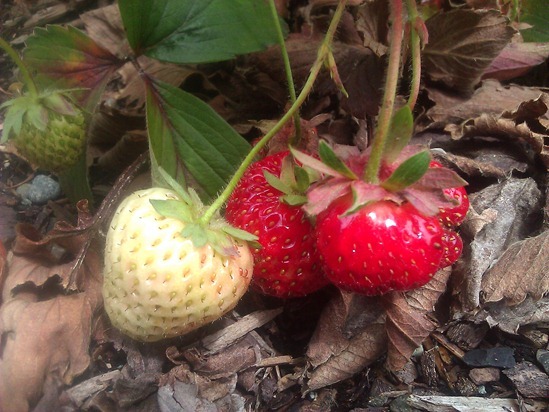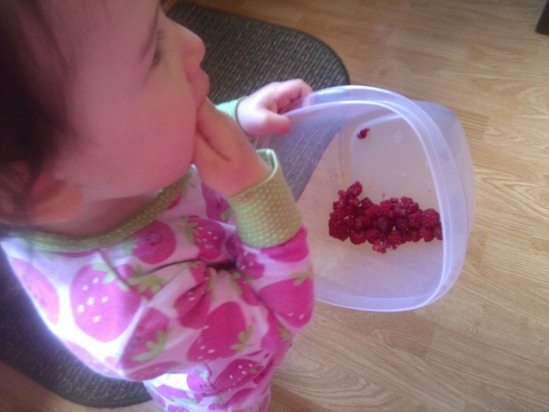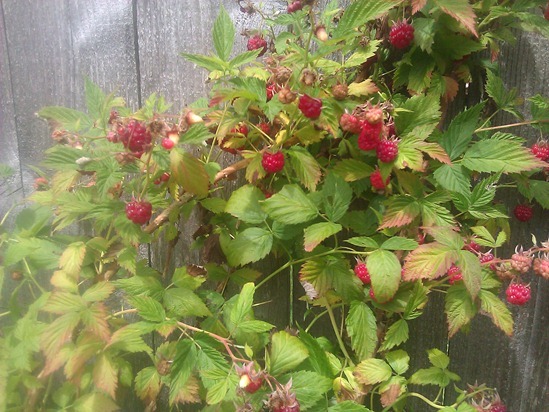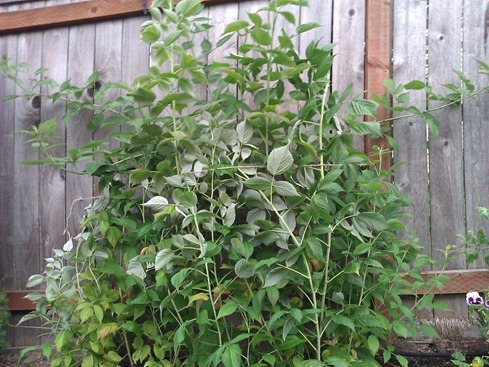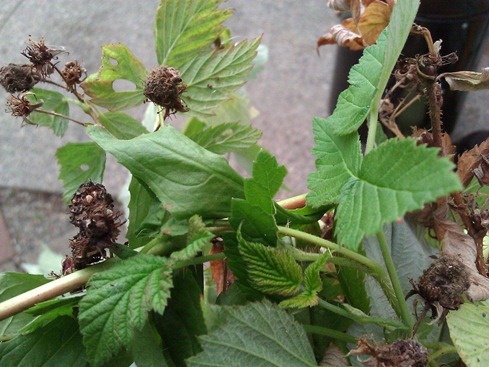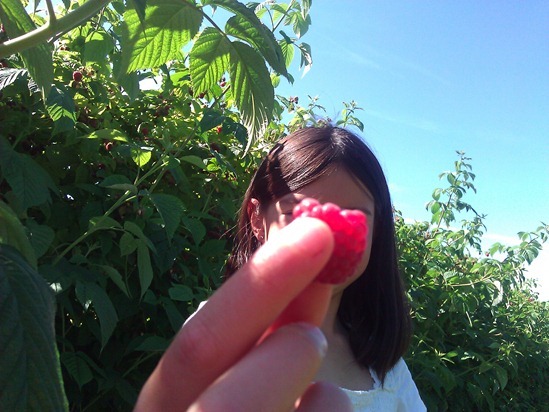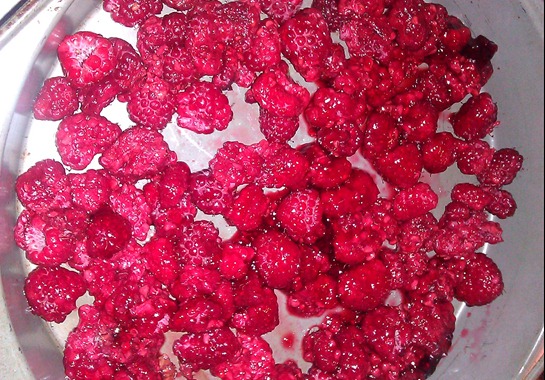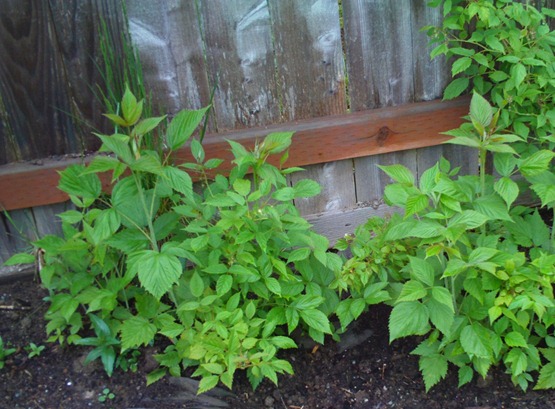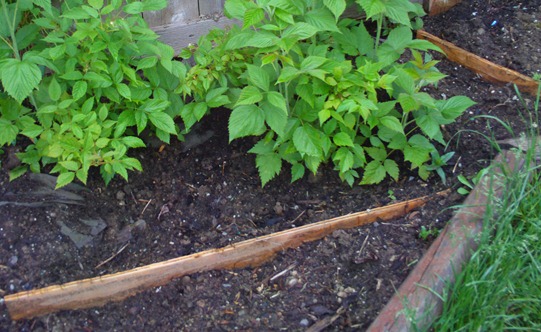Growing Fruits in Small Spaces
11 years ago blackberries, fruit, guest post, raspberries, strawberries
Are you planning a garden this year? If so, you are in good company. Over 50 million American households will be growing some or all of their own fruits, vegetables, herbs, or berries. Plant nurseries, garden centers, farm supply and home improvement centers have all noticed an uptick on sales of seeds, plants, seedlings, Fruit Plants, fertilizers and gardening tools this month.
So many people have taken an interest in gardening that even people who live in apartments, condos and houses with small yards can satisfy their urge for a green thumb. You do not need large plots of land to be a gardener. Patios, balconies and tiny back yards can be decorated with flowers, herbs, vegetables and fruits – thanks to container gardening and new types or varieties of plants. Community gardens are another way to find the space needed to grow your own fruit and vegetables.
Benefits of growing your own produce include:
- improved quality,
- better taste,
- guaranteed freshness,
- bigger variety of choices,
- control over the use of pesticides and chemicals, and
- average cost savings of about $500 per year!
If you have the urge to try your hand at growing your own produce, consider starting out with some inexpensive container plants. Everyone has seen the TV commercials for kits that hang from the roof or a shepherd’s hook to produce fresh strawberries and cherry tomatoes. But container gardening can go much farther than that.
Suburban and urban households – even many retirement village and nursing home residents – can join in the fun of watching fruit plants and vegetables grow, and then harvest them at home. You can buy seed packets or young seedlings that were started commercially for harvesting in late summer and early fall, or try for years of production and harvesting by planting dwarf fruit trees.
Small spaces can use:
- Window boxes
- Trellises
- Hanging baskets
- Raised beds in a variety of sizes and shapes, and
- Thousands of types and sizes of pots
to help grow a variety of fruits and vegetables on patios, balconies and in small yards.
Fruit trees designated as appropriate for your growing region will be disease resistant and tolerant of the climate in your area. Citrus trees do well in Florida, along the Gulf Coast and throughout California. Blueberries and cherries do well along the East Coast and mild climate zones. Apples come in dozens of varieties. Both apple trees and pear trees can be found in every state of the continental U.S. For container gardening, there are dwarf versions of dozens of types of fruit trees.
To start your successful container gardening, community garden or home vegetable garden project, find good internet resources to research want you hope to grow, and talk to local nurseries and orchards about the types of plants and trees that will work for your climate and site. There are many decisions to make early, including:
- preparation of area: tilling, testing and adjusting the pH balance, and spacing
- type of fruits and vegetables: bush plants versus pole or trailing plants
- variety/rootstock combination: dwarf trees, hybrids, grafted twigs, crossbreeds, etc.
- recommended planting techniques and timing,
- pruning, thinning, training,
- nutrition
- disease and pest control
Check back later this summer for pictures of my own container plants!
Picking strawberries and raspberries
11.8 years ago raspberries, strawberries
I like this time of year when I can quit my second job to support my kids strawberry and raspberry habits. At $5-6 for a half pint at some times throughout the year can be a great cost savings to pick these for practically free year after year.
My oldest was previously the biggest consumer but now out youngest (now 16 months) is taking in her share of the berries and has been enjoying the fresh local berries. We actually can not go anywhere without providing her with her strawberry fix. Not sure what we will do in a couple months when we stop producing.
For my area still is a little early for raspberries but the conditions have been working out and have been enjoying these for the past couple weeks as well. I did not actually plant these raspberries they snuck in under my neighbors fence which a little precautionary raspberry control I have let them thrive on my side of the fence as well. I am actually considering to let them spread farther down my fence for even larger yields.
Trimming the raspberry bushes
12.7 years ago garden maintenance, raspberries
This weekend I decided to clean up the yard a bit and do some of my later in the season chores a little early. One of these on the list was trimming my new (second year) raspberry bushes. The first step was getting these bushes under control, if I had a larger space I probably would build a more stable construction for better airflow and make picking easier…but given my small space I simply took a couple nails and a couple of lengths of twine and loosely supported the stems to keep them from falling over into our lawn. Finish by tying the twine around the nails and task number one is done.
The production of raspberries goes in a two year cycle. The first year you get vegetative stalks (all green no flowers or berries) and the second year these previous vegetative stalks become flowering stalks and produce nice delicious berries. During this time more vegetative stalks develop and the process repeats itself. Once a flowering stalk completes delivering all of its berries it will turn brown and die off. Taking care of these was my first task. All this requires is finding the flowing stalks and cut them at their base, easy way to go is to cut anything brown and then pull them out (using gloves is advised)
This part was pretty easy since I only have a few flowering stalks the first year but you can see from the picture above I should get a decent crop of raspberries now the plant is becoming more established.
Now I simply let the plants do their thing and when the leaves fall off I will trim them to a height of about 5 feet, next spring given them a healthy scoop of alfalfa pellets and wait for the bounty of sweetness to come in next summer.
Freezing Raspberries
12.8 years ago cheap, freezing, raspberries
Last weekend my daughters and I went to a berry farm in my home town to pick some raspberries. Of course a few were eaten while picking but we left with 5 lbs. of berries by the time we left. After making 6 pints of raspberry jam and eating a few cups at snacks we still had some extra left, unfortunately ripe berries will go bad and begin to mold quickly…scary how the berries I buy in the store that traveled hundreds of miles do not have this problem…the also do not taste anywhere near as delicious either.
Long story short…I ended up with some extra berries I know would go to waste if I didn’t do something with them quickly so I decided to freeze them.
1. Wash and Dry. Give the raspberries a quick wash and let the water drain for the strainer for a couple minutes to allow the water to drain off.
2. Pour berries into a container. I chose a cake pan because it was the right size to fit all my berries. Do your best to spread the berries out into as single layer but if a few are touching that is not a problem (will explain later)
3. Freeze berries. Allow 6-8 hours for berries to completely freeze. As you can see in the picture below I was lacking freezer space so opted to use the ice tray for this short freeze (remembering to turn off the ice maker to avoid an incident)
4. Separate and store the berries. If you were not careful like me and the berries seem to be frozen in a single blob, never fear. Simply take the cake pan and move inside a gallon Ziploc container and flip upside down and smack the back of the cake pan. Now you should have a circle of frozen berries. Remove the pan and use your hands (outside the bag) to break apart the berries. With just a few seconds of effort you should have nearly no big chunks of raspberries. Finish off with the poor mans vacuum sealer (stick a straw into the Ziploc bag and suck and you should have some berries good for at least 6 months.
Controlling raspberry bushes
12.9 years ago planter, raspberries
I have considered adding raspberries in my garden but never really got around to it. This year the sort of were planted for me when my neighbors raspberry plant began sneaking under our fence. This was not exactly the location I would have chosen to plant them if I picked up a plant from the local home improvement store…but figured best to go with it than fight it since I was sure the raspberry plant would be more persistent.
The reason why I would have not chosen this location is that is right next to where I grow my tomatoes/peppers also known as the only southern facing location in my yard. I also had a hydrangea growing in the same area, though fortunately was not too established and I was able to transplant without too much shock.
To attempt to keep this creeping plant under some control I decided to setup some preventive barriers. By taking some scrap plywood leftover from my grow box expansion I created an eighteen inch deep barrier to keep the raspberries from taking over my tomato/pepper turf as well as taking over my lawn. I am pretty sure that the raspberries can still get under and/or move around it but hoping this will at least slow them down a little and save me from a little extra weeding in my lawn and garden beds.
Depending how effective (or ineffective) this is I probably will dig this out a little more and make something a little more beefy to keep these raspberries in their place…but this was as much digging as I felt comfortable doing without calling the "Call Before You Dig” folks to mark up my backyard.
Either way, I am definitely look forward to picking some fresh raspberries in my backyard this summer. Though if any of you have some great ideas how to keep your raspberry plants in check I would love to hear about them…
Most profitable fruits to grow in your home garden
13.1 years ago blackberries, peach, raspberries, strawberries, summer
I previously did some analysis on the profitability of vegetables in your garden and there have been requests as well as my own curiosity of how fruits would stack up against fruit trees/bushes.
To keep things simple I made the assumption of fruit trees/bushes are fully mature with maximum yields. So please take into account that you will see some variance throughout the years. I have also used the fair market retail value of fruit when purchased by the pound, obviously all of these could be purchased cheaper by the bushel…but many of us you live in urban areas it can be difficult to make these discounted large purchases nor consume 48 lbs. of apples before they go bad.
After a crunched the numbers I was a bit surprised and happy to see blueberries at the top of the list. I have four blueberry plants already in the ground and two more waiting to be planted. Though one asterisk for this plant is that is take 3-4 years to really start producing but you get several years of good production and by buying a variety of plants with different harvest times, so unlike many other fruits you do not get a huge supply of fruit all at the same time.
Overall fruit compared to vegetables provides a similar range of harvest value depending on the variety. There are a couple of differences that should be taken in to consideration:
- Space: Fruit trees/plants range from a little over a square foot to over 60 square feet per planting
- Time to Maturity: It can take several years for some trees to become mature and start producing high yields.
- Size of Harvest: You could see hundreds of lbs. of produce within a couple weeks. You will need to determine a means to actually use this (canning, pies, forcing on neighbors)
- Commitment: Unlike annual vegetables if you decide you really don’t care for the produce it can be time intensive and expensive to switch out an apple tree for a difference variety.
| Fruit | Harvest Value/ Square Foot |
| Blueberries | $ 18.71 |
| Pomegranate | $ 13.38 |
| Nectarine | $ 8.64 |
| Strawberries | $ 8.13 |
| Peach | $ 7.90 |
| Apple (Standard) | $ 6.64 |
| Apple (Semi-Dwarf) | $ 6.40 |
| Raspberries | $ 6.23 |
| Apricot | $ 3.54 |
| Plum | $ 3.18 |
| Blackberries | $ 3.05 |
| Pear (Standard) | $ 2.90 |
| Fig | $ 2.66 |
| Almond | $ 2.56 |
| Apple (Dwarf) | $ 2.35 |
| Walnut | $ 2.28 |
| Pear (Dwarf) | $ 2.10 |
| Cherry (Sour) | $ 1.13 |
| Cherry (Sweet) | $ 0.84 |
As always the common sense principles apply:
- Grow what you like to eat
- Cost is only one factor to consider, you can’t beat real fresh produce
